
What is matter, and how do neurons work?
"You, your joys and your sorrows, your memories and your ambitions, your sense of personal identity and free will, are in fact no more than the behaviour of a vast accumulation of nerve cells and their associated molecules...You are nothing but a pack of neurons."
James D. Watson, 1994.
"Given that comprehension of the aforementioned "matter" can only be perceived as an individual's subjective notion of actuality, one can only assume that such a sacred notion of tangibility is nothing more than a mere implied existence; therefore not necessarily a corporeal force to be conceived as having irrefutable presence."
Dr. Winston O'Hanraha'hanrahan PhD. Oxford
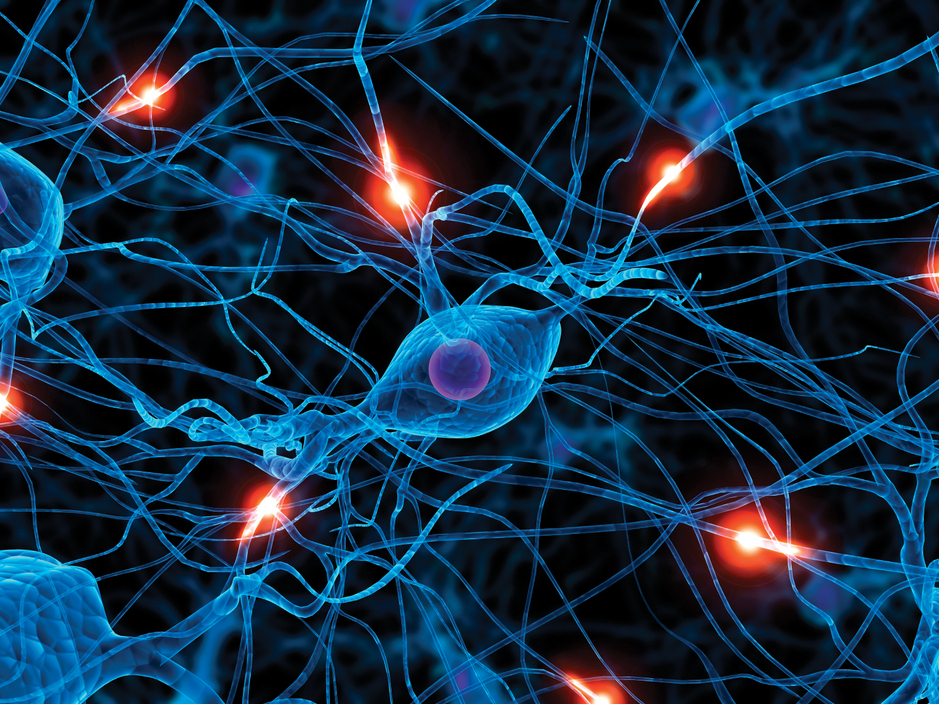

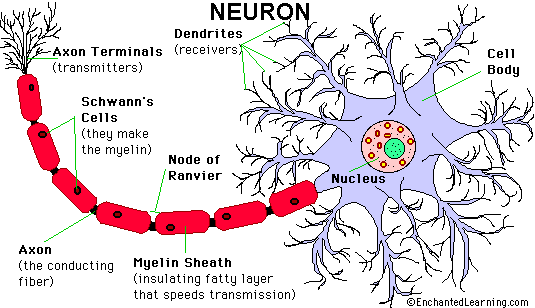
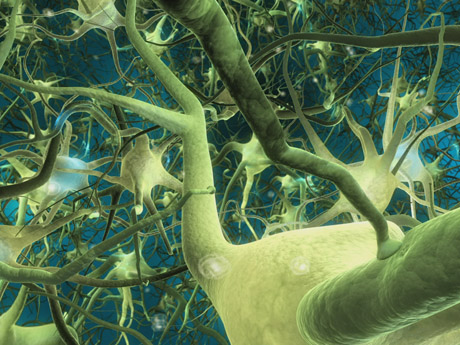
Neurons:
Neurons are cells that transmit information. They have three main components:
- Dendrites: receive information and pass to the cell body
- Cell Body: this controls the centre of the neuron
- Axon: extends from the cell body, carries lectrical potential , sends a chemical message to adjacent neurons. Axons can be very long. One axon could reach from the brain to the lower spinal cord.
Neurons are cells that transmit information. They have three main components:
- Dendrites: receive information and pass to the cell body
- Cell Body: this controls the centre of the neuron
- Axon: extends from the cell body, carries lectrical potential , sends a chemical message to adjacent neurons. Axons can be very long. One axon could reach from the brain to the lower spinal cord.
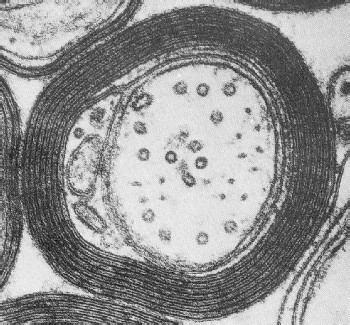
Myelin:
Myelin is a fatty, wax like substance which covers the axon of multiple neurons.
Its functions are to expedite neurotransmitters whilst insulating neurons from each other thereby allowing the process of neurotransmission to perform efficiently.
10% of the brain comprises of myelinated axons - this is what the white matter of the brain contains - hence the white sabacious appearance.
Myelin is a fatty, wax like substance which covers the axon of multiple neurons.
Its functions are to expedite neurotransmitters whilst insulating neurons from each other thereby allowing the process of neurotransmission to perform efficiently.
10% of the brain comprises of myelinated axons - this is what the white matter of the brain contains - hence the white sabacious appearance.
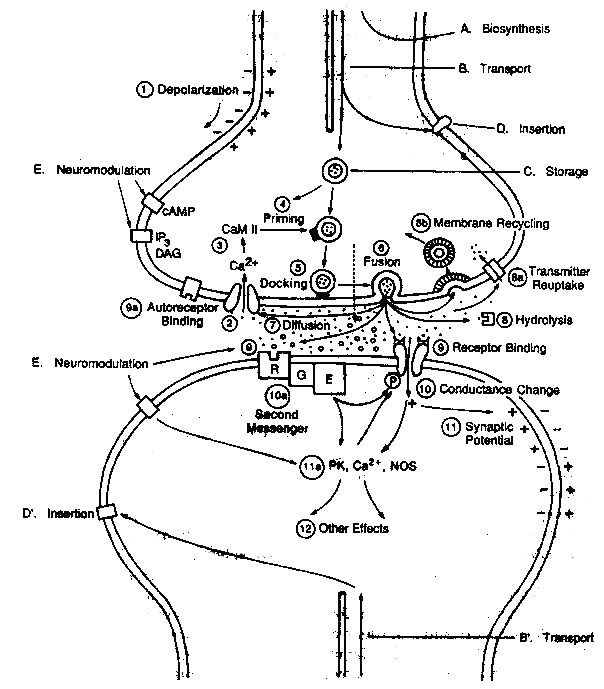
Synapse:
The Synapse is the junction between an axon terminal and dendrite of the next neuron. Neurotransmitter (NT) molecules are released from the axon terminal into the synapse when the action potential arrives at the axon terminal.
Neurons transmit information as an electrochemical impulse. An electrical impulse in the neuron triggers a chemical release - a neurotransmitter. This in turn changes the electrical state of the receiving neuron and the transmission is once again electrical.
The Synapse is the junction between an axon terminal and dendrite of the next neuron. Neurotransmitter (NT) molecules are released from the axon terminal into the synapse when the action potential arrives at the axon terminal.
Neurons transmit information as an electrochemical impulse. An electrical impulse in the neuron triggers a chemical release - a neurotransmitter. This in turn changes the electrical state of the receiving neuron and the transmission is once again electrical.
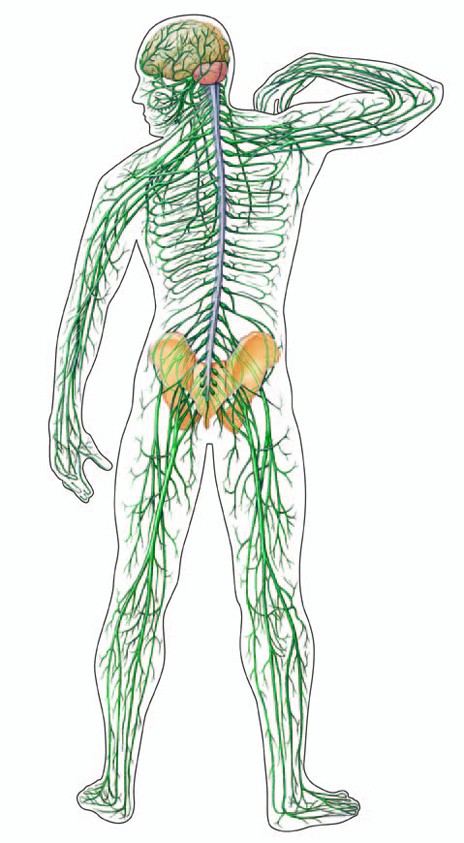
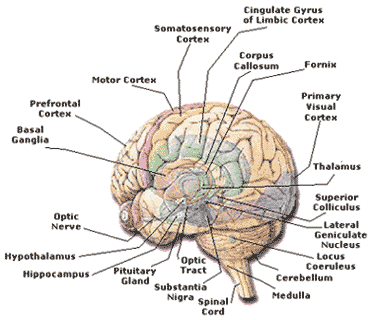
The Central Nervous System (CNS).
The Nervous System (CNS) and Peripheral Nervous System (PNS) can be divided into two sections. The nervous system performs three major functions in the body:
- It receives information from sites on cells where particular chemicals can bind to and so change the activity of the cell. These sites are called receptors.
- It processes this information and determines the appropriate response by integrating all the incoming signals from the receptors.
- It signals other cells and body organs to perform the appropriate response.
There are two main type of cells that make up the nervous system - neurons and glial cells.
- It receives information from sites on cells where particular chemicals can bind to and so change the activity of the cell. These sites are called receptors.
- It processes this information and determines the appropriate response by integrating all the incoming signals from the receptors.
- It signals other cells and body organs to perform the appropriate response.
There are two main type of cells that make up the nervous system - neurons and glial cells.
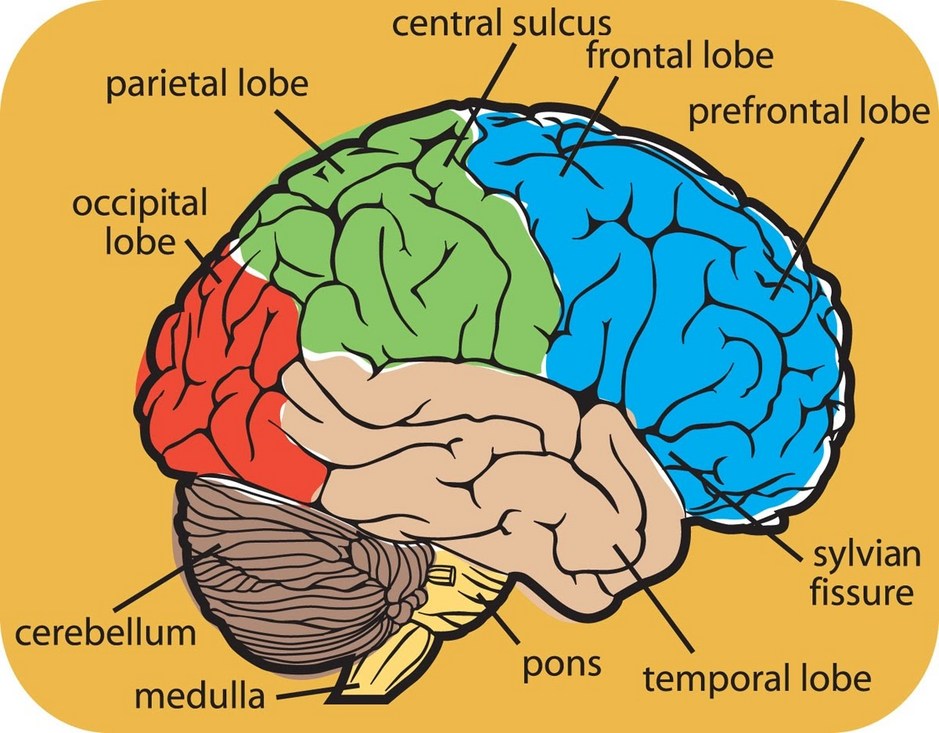
MAJOR STRUCTURES OF THE BRAIN
The Brainstem: This is the primitive portion of the brain.
Pons: this is involved in respiration, sleep regulation, and dreaming.
Medulla: involved in life support functions such as respiration and heart rate.
Reticular activating system: an arousal system within the brainstem.
Corpus callosum: a band of axons that interconnect the hemispheres.
Thalamus: the sensory relay area.
Limbic System: involved in emotions.
Hypothalamus: feeding, fleeing, mating, fighting and homeostasis.
Cerebellum: this is invloved in motor control.
Pons: this is involved in respiration, sleep regulation, and dreaming.
Medulla: involved in life support functions such as respiration and heart rate.
Reticular activating system: an arousal system within the brainstem.
Corpus callosum: a band of axons that interconnect the hemispheres.
Thalamus: the sensory relay area.
Limbic System: involved in emotions.
Hypothalamus: feeding, fleeing, mating, fighting and homeostasis.
Cerebellum: this is invloved in motor control.
CEREBRAL CORTEX
The cortex is the human "bark", which is convoluted to increase the number of cells without increasing size. The Cerebral Cortex is the grey matter of the brain, therefore it contains lots of neural cell bodies.
It is made up of four lobes, but not entirely separate - it is merely divided by fissures.
The cortex is the human "bark", which is convoluted to increase the number of cells without increasing size. The Cerebral Cortex is the grey matter of the brain, therefore it contains lots of neural cell bodies.
It is made up of four lobes, but not entirely separate - it is merely divided by fissures.
The four main parts of the cortex are:
Frontal: Self-awareness, planning, voluntary movement, emotional control, speech, and working memory.
Parietal: Body sensations.
Occipital: Vision.
Temporal: Hearing and language comprehension.
Frontal: Self-awareness, planning, voluntary movement, emotional control, speech, and working memory.
Parietal: Body sensations.
Occipital: Vision.
Temporal: Hearing and language comprehension.
